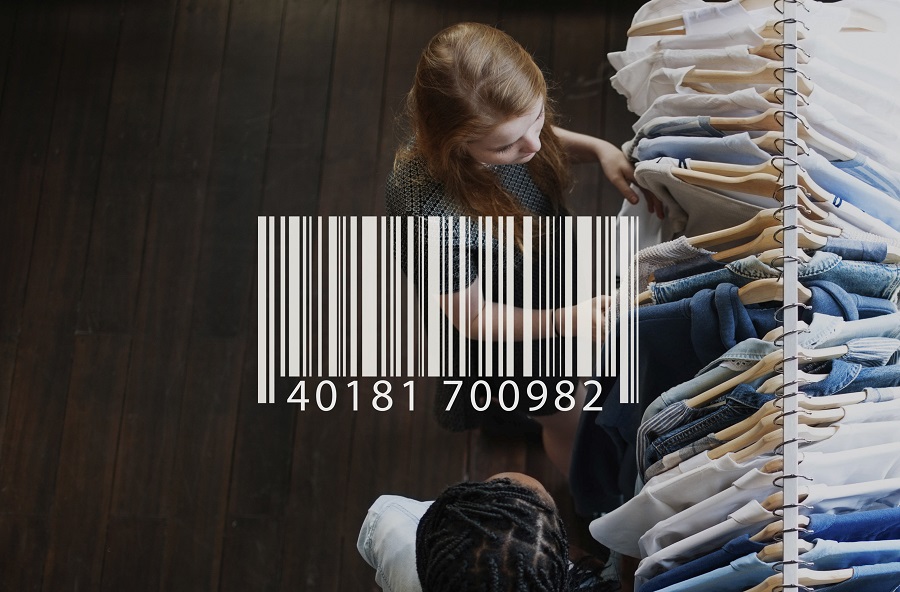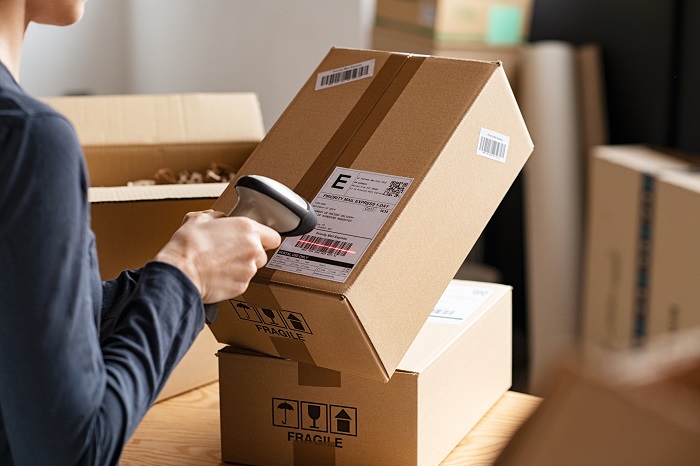10 Apr

Have you ever wondered how those black lines on product packages get translated into information at checkout registers? Or how warehouses manage to keep track of thousands of items? The answer lies in barcodes, those ubiquitous striped labels that have revolutionized retail and business.
Barcodes may seem simple, but their impact has been profound through enabling efficient identification of items. Used by nearly all stores and industries involving inventory, barcodes work through their ability to represent unique product data via scannable patterns. In this post, we will take a closer look at what exactly barcodes are, the components that make them work, and how they have transformed business operations through automated tracking of goods.
What is a barcode?
A barcode is a specific pattern of lines, or spaces of varying widths that represent numbers, letters, or other coded information. The data encoded in a barcode can be interpreted by scanners called barcode readers that are attached to cash registers, cell phones, and other electronic devices used in retail stores or warehouses. The invention of barcodes revolutionized how products are tracked and transactions are processed worldwide.
Also Read: A Complete Guide to SKU Numbers
What do barcode numbers mean?
Barcode bar code numbers contain meanings that offer information about the item it is attached to. The numbers encoded in a barcode can identify:
- The manufacturer of the product
- Specific details about the product like color, size, or ingredients
- The universal product code or UPC number which is a unique 12-digit number assigned to every item sold in stores
- Expiration dates for food and medicine
- Batch or lot numbers for tracking production runs
- Weight and dimension details for shipping purposes
The numeric values in a barcode give data about the product that helps with tracking inventory, processing payments, and also providing consumers with additional details if scanned.
How do barcodes work?

The process of how barcodes function is quite simple. Here are the main steps:
- A barcode scanner or any barcode scanner app for inventory shines a laser or LED light on the barcode pattern.
- The pattern of thick and thin lines causes the light to scatter in different ways. The differences in light scattering are detected by the scanner.
- The scanner’s sensor then analyzes how much light is being reflected versus absorbed by the dark bars. Based on the widths of reflective spaces compared to dark bars, it decodes the barcode pattern into a sequence of numbers.
- These numbers are then sent to a connected computer database or cash register system for processing.
- Computers reference a massive barcode number directory to look up information about the item like price, description, and more based on the number sequence read.
- Finally, this collected data allows store cash registers, inventory management systems, and more to identify products during checkout, stocking shelves, taking inventory, and other important business functions.
Why are barcodes important?
Barcodes hold tremendous significance in our day-to-day lives and have benefited both consumers and businesses in several ways:
Faster checkout – Scanning barcodes is way quicker than manually entering product codes. This reduces long lines at stores.
Accurate tracking – Barcodes allow for precise tracking of inventory levels, expired goods, and sales performance on a massive scale.
Reduced errors – Chances of incorrectly ringing up items are minimized when an automated barcode system is used instead of manual entry.
Self-checkout option – Many shops provide self-checkout lanes which would not be possible without easy-to-scan barcodes.
Simplified ordering – Manufacturers can easily monitor stock levels, track production batches and reorder raw materials with barcode tracking.
So, barcodes have tremendously streamlined retail, manufacturing, and logistics by enabling speedy automated identification and record-keeping of items. This enhances efficiency for both businesses and customers.
Also Read: How to Buy POS Hardware for Your Retail Business
Types of barcode scanners
There are various types of barcode scanners used commonly depending on the environment and task:
Handheld scanner – A portable device that moves across the barcode. Used in retail stores, warehouses, and for shipping/receiving.
Presentation scanners – Stationary scanners that read barcodes as items pass over or near their scanning window. Used at self-checkout counters.
Slot scanners – Narrow gap scanners suited for reading barcodes on tickets, boarding passes, or loyalty cards as they are swiped through.
Camera-based scanners – An imaging scanner that takes photographs of barcodes from any angle and decodes the picture digitally. Used for inventory auditing on mobile devices.
Tunnel/portal scanners – Fixed scanners positioned over conveyor belts to automatically scan packages moving through shipping/receiving areas.
The appropriate scanner type depends on factors like the size of items, workflow, number of items to be scanned per hour, etc. All major scanners instantly retrieve product details from connected databases.
What is the purpose of a barcode?
As discussed previously, the key function of a barcode is product identification which forms the backbone for inventory management systems. Some specific purposes served by barcodes include:
- Automatically calculate sale prices during checkout by linking the barcode number to the price stored in the database.
- Enable speedy self-checkout without the need to manually enter product codes for each item.
- Quickly retrieve all related information about an item including description, packaging, manufacturer, etc by a single scan.
- Track stock levels in real-time as barcoded items are received into or picked from the warehouse.
- Produce sales reports, track top-selling products, and reordering patterns by storing transaction data against each unique barcode.
- Analyze product performance over time, expiry dates, batches, and manufacturing dates through embedded encoded details.
- Support efficient shipping/receiving by associating packages with purchase/delivery orders during loading/unloading.
A barcode acts as a machine-readable digital identity for a physical good that sustains seamless automated recognition and related data processing.
What happens when you scan a barcode?

The sequence of events occurring on scanning a barcode are:
- The barcode scanner reads and decodes the black/white line patterns.
- It converts this visual information into a unique numeric string.
- The scanner is connected via cable or wirelessly to a computer system.
- It sends the numeric barcode data to the associated point-of-sale (POS) software or database on the system.
- The POS/database uses this number to automatically look up matching product details pre-stored in its records against that specific code.
- Relevant attributes of the scanned item like description, price, expiration date, etc are then retrieved from records.
- This retrieved information gets displayed on the connected cash register, and inventory monitoring screen or used for updating stock levels.
- The transaction like cash payment, shipping manifest, or inventory count gets updated accordingly.
In a nutshell, scanning a barcode kicks off an automated digital product identification process that retrieves the linked information from within vast databases.
What is the difference between a barcode and a QR code?
Both barcodes and QR codes (Quick Response codes) serve the purpose of encoding information in a machine-readable visual format. However, there are some key distinguishing aspects:
Encoding – Barcodes only encode numbers whereas QR codes can contain different types of data like URLs, contact details, location coordinates, etc in both numeric and alphabetic format.
Capacity – A regular UPC barcode can hold only approximately 20 numeric characters whereas a QR code has a significantly higher storage capacity of up to 7,089 characters.
Recognition – Barcodes need to be scanned line-by-line from one direction whereas QR codes can be scanned from any angle using 2D imaging scanners.
Common uses – Barcodes are predominantly used in retail for price lookup while QR codes see wider applications like product catalogs, loyalty programs, electronic tickets, or triggering actions like website opening.
Scanner types – Barcodes are decoded by laser or CCD scanners while QR codes need 2D imaging scanners capable of photographing the entire matrix.
Though both serve identification needs, QR codes have technological advances over barcodes enabling storage of larger payloads of varied data types with omnidirectional scanning. Barcode scanners for retail stores are used by retail businesses worldwide. POS systems make inventory management easy and precise for all sizes of businesses. Selecting a secure POS system can be an uphill battle, but Hana Retail makes it easier with its dependable, safe, and user-friendly platform. Hana Retail offers a FREE trial, so sign up today!





